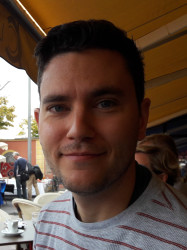BibTex format
@article{Callaghan:2009:10.1175/2008jtecho634.1,
author = {Callaghan, AH and White, M},
doi = {10.1175/2008jtecho634.1},
journal = {Journal of Atmospheric and Oceanic Technology},
pages = {383--394},
title = {Automated Processing of Sea Surface Images for the Determination of Whitecap Coverage},
url = {http://dx.doi.org/10.1175/2008jtecho634.1},
volume = {26},
year = {2009}
}

